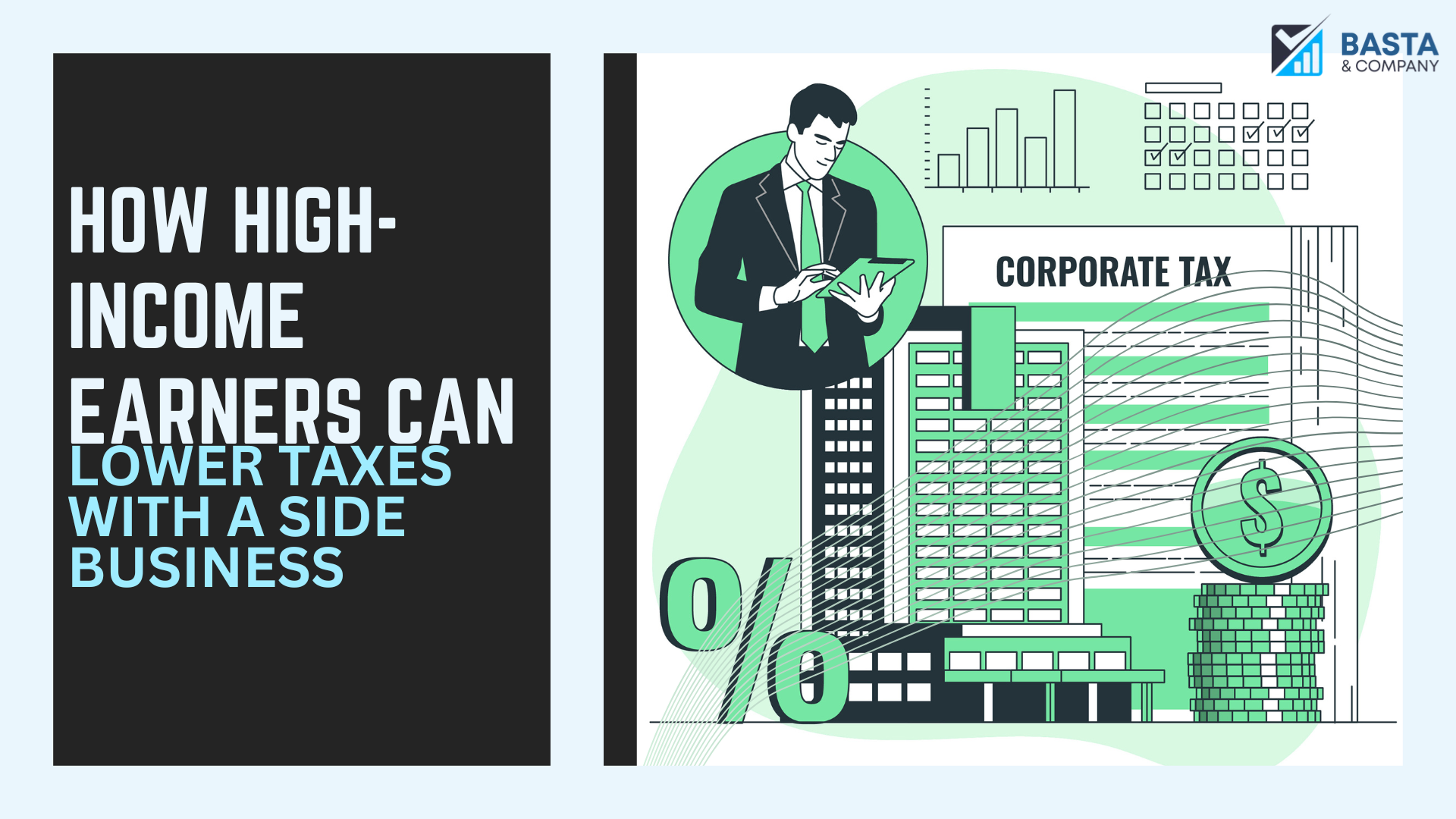
How High-Income Earners Can Lower Taxes with a Side Business
Webmaster • November 11th, 2024
If you earn above six figures, anything extra you earn—like those profits on a side business you might be running—can attract huge taxation. It is pretty common for high-income earners to experience crippling taxes. Of course, with smart tax strategies, you can actually leverage your side business to be a means of legally lowering your tax burden.
There are hands-on strategies that high-earners can deploy to cut down taxes while building sustainable wealth.
Make the Side Gigs into a Business
The first thing you should do is treat that side gig as a serious business. Establishing an LLC gives your business legal standing and access to more tax advantages. Once you have your side business in shape, many of your expenses are deductible—including your internet fees, software subscriptions, and professional services.
You get flexibility in the way you pay taxes. Where you might be taxed as a hobbyist, you can elect to be taxed as an S-corp. That would help you avoid some self-employment tax on part of your income. For the high-earners, this could be thousands of dollars of savings a year.
Set up a SEP IRA
By setting up a SEP IRA for your business, you can put aside as much as 25 percent of the profit in a business or even up to $69,000 per year in 2024, whichever is lower. This is an enormous contribution compared to that of standard 401(k)s and IRAs.
What you may not know is that contributions to a SEP IRA are tax-deductible. That means you’re not just saving for retirement; you’re lowering your taxable income in the current year. Plus, because they are so easy to set up and maintain, SEP IRAs make perfect sense for high-income earners with side businesses, who would like to minimize taxes while securing a wealthy retirement.
Claim Your Self-Employment Tax
Many high earners are surprised to learn that the self-employment taxes work somewhat differently than the W-2 income taxes. For every dollar that comes in through their side business, they will be paying both employer and employee portions of the Social Security and Medicare tax, which add up to 15.3%. However, the tax code does give you a break in this regard: you can actually deduct half of your self-employment tax when filing your income taxes.
Assume you have self-employment taxes of $20,000. You can offset this amount from your income subject to tax, which means you save part of your federal income taxes. It’s not cash money back, but saving part of your tax expense works in your favor, too.
Consider Getting Health Insurance Through Your Business
If you pay out-of-pocket for your health insurance currently, your side business could save you thousands of dollars every year. Operating a business opens you up to the possibility of deducting the full amount of premiums paid for health, dental, and even long-term care for yourself, your spouse, and your dependents.
This discount applies whether or not you have itemized your other deductions and it reduces your adjusted gross income – basically lowering your taxable income. High-income professionals with families will see significant savings by buying health insurance through their business rather than through an individual employer plan.
Tax-deductible Business Expenses
You will probably need to buy some equipment, supplies, or software for your secondary business. The good news is that almost everything you buy qualifies as a deductible expense. Whether it’s a new laptop, a new printer, a software subscription, or even a new chair for your desk, these purchases decrease your business income – and, subsequently, your tax liability.
Under Section 179 deduction, you can immediately write off the full cost of equipment in the year you buy it instead of depreciating it over several years. This acceleration in depreciation can be pretty useful for high-earners and thus have to pay off the taxes sooner rather than later.
Hire Your Spouse and/or Kids to Help with Your Business
If your spouse helps in bookkeeping, customer service, or marketing, you pay him a salary and include this as a business expense to be deducted from the tax return. This shifts income from a higher tax bracket (yours) to a lower one (theirs). Thus, you save taxes overall.
Hiring your children gives you an even higher reward. From a tax standpoint, If you are a sole proprietor or have a partnership with your spouse, the standard deduction protects the first $14,600 in wages you pay your children from federal income tax in 2024. And if your child is under age 18, you’re not required to withhold Social Security or Medicare taxes. In doing so, you’ll move money out of the business, into the family household and build wealth with it while lowering taxable income from the business side.
Talk to the Experts
If you are a high-income professional with side businesses, smart tax strategies can make all the difference between keeping half of your income—or giving it away to the IRS. It would require careful planning and strategic decisions, for you to legally reduce the tax burden, in a way that a substantial amount of hard-earned money stays in your pocket. Consult a tax professional to set yourself up for long-term financial success.
Consult with our CPA tax accountant to get any information.

Samy Basta brings you more than 20 years experience in tax, financial, and business consulting to his role as founder of Basta & Company. His focus is primarily strategic business planning, empowering clients to set priorities, focus energy and resources, and strengthen operations. In addition, Samy and his firm provide strategic counsel, and technical insight, on a wide range of needs, including tax saving strategies, tax return compliance, as well as choice of entity.